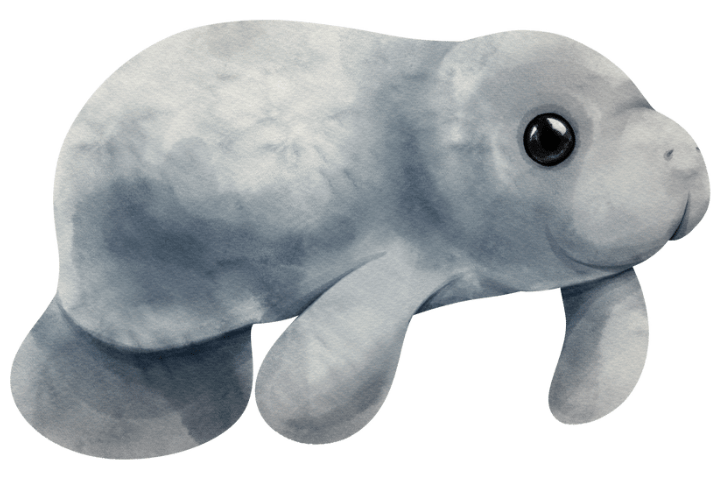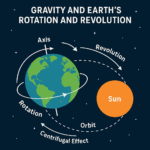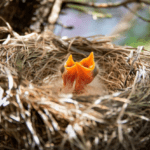
The Dugong: The Gentle Giant of the Seas

Introduction
The dugong (Dugong dugon), often called the “sea cow,” is a marine mammal that grazes on seagrass meadows in the coastal waters of the Indian and Pacific Oceans. Despite their gentle nature and vital ecological role, dugongs are increasingly threatened by human activities and environmental changes. This blog post delves into the life of dugongs, their ecological importance, threats they face, and conservation efforts, supported by statistics, analytics, and grids for a comprehensive understanding.
Understanding the Dugong
Scientific Classification
- Kingdom: Animalia
- Phylum: Chordata
- Class: Mammalia
- Order: Sirenia
- Family: Dugongidae
- Genus: Dugong
- Species: Dugong dugon
Physical Characteristics
Dugongs have a streamlined body, fluke-like tail, and paddle-shaped flippers. They typically grow to about 2.5 to 3 meters in length and weigh between 250 to 400 kilograms. Unlike manatees, their closest relatives, dugongs have a dolphin-like tail and are strictly marine, relying heavily on seagrass for sustenance.
| Characteristic | Details |
|---|---|
| Length | 2.5 to 3 meters |
| Weight | 250 to 400 kilograms |
| Lifespan | 70 years |
| Diet | Herbivorous (primarily seagrass) |
Ecological Importance of Dugongs
Dugongs play a crucial role in maintaining healthy seagrass ecosystems. As herbivores, they help in the regeneration of seagrass beds by preventing overgrowth and promoting nutrient cycling. This activity supports the biodiversity of marine life, including fish species that depend on seagrass meadows for food and habitat.
| Ecological Role | Impact |
|---|---|
| Seagrass Management | Dugongs graze on seagrass, keeping the ecosystem balanced and promoting new growth. |
| Nutrient Cycling | Their feeding habits facilitate nutrient redistribution in the ecosystem. |
| Biodiversity Support | Healthy seagrass meadows support various marine species. |
Current Population Status
Dugongs are distributed across 48 countries, but their populations are highly fragmented and declining in many regions due to habitat loss, hunting, and bycatch. The International Union for Conservation of Nature (IUCN) lists dugongs as vulnerable, with certain populations, like those in the Philippines and Japan, considered critically endangered.
Population Statistics
- Global Population Estimate: Approximately 70,000 individuals
- Key Habitats: Australia, the Red Sea, the Persian Gulf, Southeast Asia
- Threat Level: Vulnerable (IUCN Red List)
| Region | Population Estimate | Threat Level |
|---|---|---|
| Australia | 10,000 to 12,000 | Vulnerable |
| Red Sea | 4,000 to 7,000 | Vulnerable |
| Philippines | Less than 200 | Critically Endangered |
| Japan | Less than 50 | Critically Endangered |
Threats to Dugongs
The dugong population is under severe threat from several human-induced factors, including:
- Habitat Loss: Coastal development, pollution, and climate change have led to significant loss of seagrass meadows, essential for dugong survival.
- Bycatch: Dugongs often get accidentally caught in fishing nets, leading to injury or death.
- Hunting: In some regions, dugongs are still hunted for their meat and oil, despite legal protections.
- Boat Strikes: Dugongs are slow-moving and often collide with boats, resulting in fatal injuries.
Threat Analysis
| Threat | Impact on Dugongs | Severity |
|---|---|---|
| Habitat Loss | Decreased food availability, displacement | High |
| Bycatch | Mortality from fishing nets | High |
| Hunting | Population decline | Medium |
| Boat Strikes | Injury or death | Medium |
Conservation Efforts
Numerous conservation initiatives are underway to protect dugongs and their habitats. These include:
- Marine Protected Areas (MPAs): Establishing MPAs to safeguard critical habitats.
- Community Engagement: Educating coastal communities about dugong conservation.
- Legal Protections: Implementing and enforcing laws against dugong hunting and bycatch.
- Research and Monitoring: Conducting research to monitor dugong populations and health.
Key Conservation Programs
| Program | Region | Focus |
|---|---|---|
| Dugong and Seagrass Conservation Project | Indian Ocean, Pacific Ocean | Habitat protection, community engagement |
| Australian Marine Parks | Australia | Protection of critical dugong habitats |
| Philippine Marine Mammal Stranding Network | Philippines | Rescue and rehabilitation of stranded dugongs |
The Future of Dugongs
Protecting dugongs requires a collaborative effort between governments, NGOs, local communities, and international organizations. Continued research, stricter enforcement of protective laws, and greater awareness of the importance of dugongs in marine ecosystems are crucial for their survival.
Conclusion
Dugongs are not just gentle giants of the sea; they are vital to the health of marine ecosystems. Their declining population is a call to action for enhanced conservation efforts. By protecting dugongs, we also protect the broader marine environment, ensuring its health for future generations.
Hello, I am Aman (: Full Time Traveler :) At the age of 41, in April 2023, fueled by my love for travel and the determination not to remain fixed like a tree, I embarked on a bold journey. Having dedicated 17 years to a corporate job, I chose to transition from a full-time employee to a full-time traveler, driven by the desire to break free from the routine and constraints of a conventional life. Along the way, I not only explored the wonders of travel but also uncovered the transformative power of financial freedom. I realized how it could liberate me to lead a life teeming with adventure, purpose, and fulfillment. Through my blogs, I am passionately sharing my story, aiming to inspire and provide valuable guidance to those, like me, who aspire to weave travel into a life overflowing with limitless possibilities.






















Post Comment
You must be logged in to post a comment.